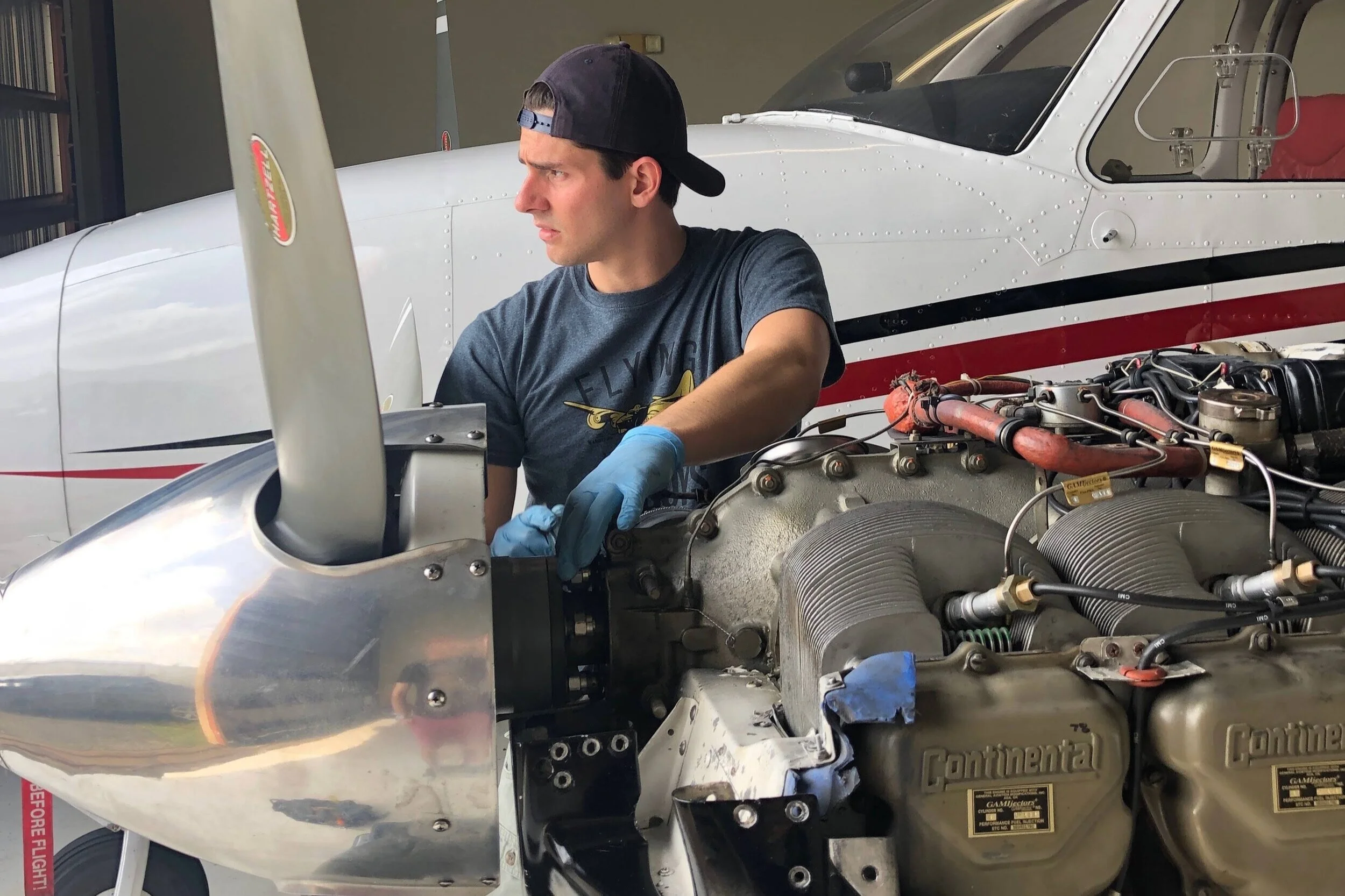For most commercial pilots turning wrenches in the hanger is not what they consider a good time! On the other side of the spectrum private pilots who someday want to own their own aircraft wouldn’t mind getting dirty from time to time wether it is to save some cash or just because they enjoy it. I personally think this is just another great part of the hobby! Since I was in flight school I would alway wonder out to the maintenance shop and help out the mechanics with anything I could get my hands dirty. Today I couldn’t be more thankful to everything that I learned from it. It truly made me a better pilot and offered me a greater understanding of the machines we fly.
As much as I would love to take time off and go to A & P school, it would be require a lot of time. You can’t take lessons at your own pace and it requires full time enrollment. It just won’t work in my case being a full time airline pilot but I’m personally going to apply for the rating based on on the job experience. Luckily in the mean time there are some things that the FAA allows the owners or operators to do on their airplanes.
14 CFR Part 43 Appendix A paragraph (c) is what we are mostly going to talk about. Anything on this list is considered preventative maintenance and only requires you to have a private pilot certificate. In order for this to work you must also follow the instructions per the maintenance manual and I strongly encourage anyone to first accomplish everything they want to do with a A & P next to them, having someone there to ask questions and to verify your work is done properly is worth every penny! I have personally read the service manuals and feel very confortable navigating thru it, but it still doesn’t beat looking to your side and asking someone that has done it one million times what the best technique on getting the job done.
Like everything in aviations things change, be sure to verify with the latest regulations on what you can and can’t do. With that said below are some of the things we are allowed to do:
Removal, installation, and repair of landing gear tires.
Replacing elastic shock absorber cords on landing gear.
Servicing landing gear shock struts by adding oil, air, or both.
Servicing landing gear wheel bearings, such as cleaning and greasing.
Replacing defective safety wiring or cotter keys.
Lubrication not requiring disassembly other than removal of nonstructural items such as cover plates, cowlings, and fairings.
Replenishing hydraulic fluid in the hydraulic reservoir.
Refinishing decorative coating of fuselage, balloon baskets, wings tail group surfaces (excluding balanced control surfaces), fairings, cowlings, landing gear, cabin, or cockpit interior when removal or disassembly of any primary structure or operating system is not required.
Applying preservative or protective material to components where no disassembly of any primary structure or operating system is involved and where such coating is not prohibited or is not contrary to good practices.
Repairing upholstery and decorative furnishings of the cabin, cockpit, or balloon basket interior when the repairing does not require disassembly of any primary structure or operating system or interfere with an operating system or affect the primary structure of the aircraft.
Making small simple repairs to fairings, nonstructural cover plates, cowlings, and small patches and reinforcements not changing the contour so as to interfere with proper air flow.
Replacing side windows where that work does not interfere with the structure or any operating system such as controls, electrical equipment, etc.
Replacing safety belts.
Replacing seats or seat parts with replacement parts approved for the aircraft, not involving disassembly of any primary structure or operating system.
Trouble shooting and repairing broken circuits in landing light wiring circuits.
Replacing bulbs, reflectors, and lenses of position and landing lights.
Replacing wheels and skis where no weight and balance computation is involved.
Replacing any cowling not requiring removal of the propeller or disconnection of flight controls.
Replacing or cleaning spark plugs and setting of spark plug gap clearance.
Replacing any hose connection except hydraulic connections.
Replacing prefabricated fuel lines.
Cleaning or replacing fuel and oil strainers or filter elements.
Replacing and servicing batteries.
Replacement or adjustment of nonstructural standard fasteners incidental to operations.
The inspection and maintenance tasks prescribed and specifically identified as preventive maintenance in a primary category aircraft type certificate or supplemental type certificate holder’s approved special inspection and preventive maintenance program when accomplished on a primary category aircraft provisions.
Removing and replacing self-contained, front instrument panel-mounted navigation and communication devices that employ tray-mounted connectors that connect the unit when the unit is installed into the instrument panel, (excluding automatic flight control systems, transponders, and microwave frequency distance measuring equipment (DME)). The approved unit must be designed to be readily and repeatedly removed and replaced, and pertinent instructions must be provided.
There are a few more on the list but these are the most practical and what most of us will encounter. Like I mentioned above, get these done with your local A & P and you will have a blast. I guarantee you it will make you a better pilot and you will have a better understanding or your aircraft.



.png?width=178&height=50&name=Aviator%20Zone%20Academy%20(5).png)
Submit a Comment